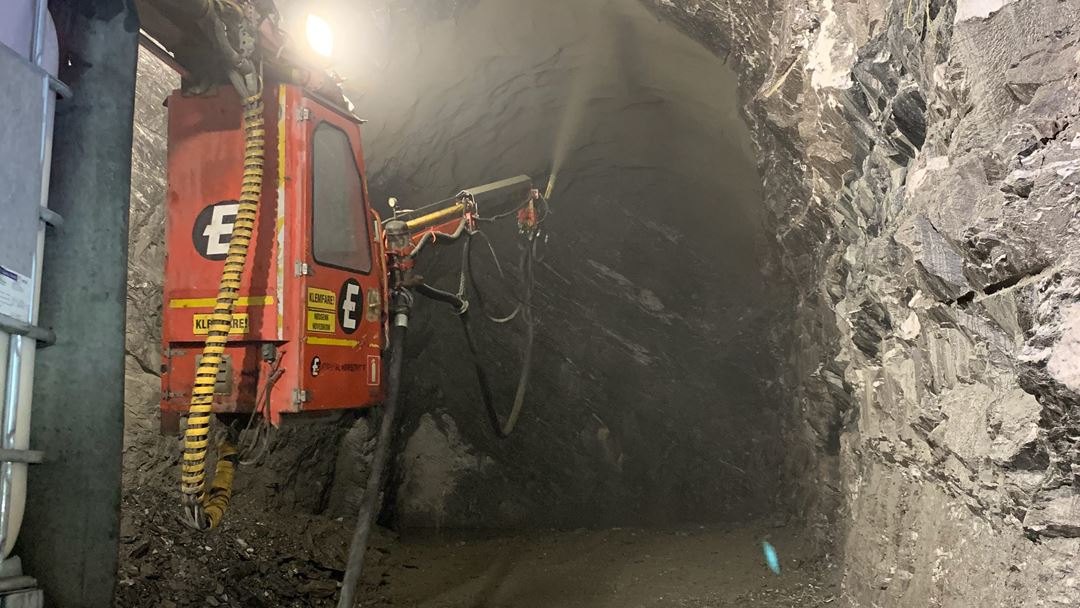Facts about SUPERCON
Part 1: Knowledge needs
Part 1: Knowledge needs
Why "Sprayed sUstainable PErmanent Robotized CONcrete tunnel lining"?
The environmental footprint of the physical infrastructure in a transport system is particularly important for rail and road transport, and even more so for Norwegian conditions with its landscape, topography and demography. Reasons are:
- Heavy infrastructure, i.e. material intensive. Especially new alignments with strict requirements for curvature and elevation, as well as for safety and operational aspects.
- Stricter requirements for modern infrastructure lead to higher share of the most material intensive elements; tunnels, bridges and constructions.
- For Norwegian conditions, the infrastructure's share of the environmental footprint is further increased by:
- Relatively clean electricity production.
- Demanding topography means more tunnels, bridges etc.
- Low population density means long alignments serving a small market, i.e. few people are transported over long distances.
Tunnel linings made of sprayed concrete, or shotcrete (hereinafter SCL Sprayed Concrete Linings), have been a core part of the traditional "Norwegian way" of supporting tunnels,
- acting as fast-working immediate support during excavation to enable high productivity
- allowing a cost efficient sprayed concrete tunnel lining.
Areas where increased knowledge is needed are:
- Utilising new, eco-friendly materials in sprayed concrete – improved material properties
- Robotized application methods
- Improved durability to ensure a common service life requirement of 100 years - Sustainability
- New approach for structural analysis and design

Part 2: The Knowledge-building Project
Part 2: The Knowledge-building Project
Objectives
The primary objective of SUPERCON is to provide new competence for research institutions and industry to produce Sprayed sUstainable Permanent Robotized CONncrete tunnel linings, which meet modern demands for functionality, sustainability and eco-friendliness in future infrastructure projects. Improvement of robustness and durability will reduce cost and environmental loads for the public infrastructure owners in Norway over a 100-year service life. To achieve the main objective, the project will focus on several sub tasks, as listed below:
1. Understand concrete materials and their properties needed to obtain spray-ability and quality of SCL working as both immediate and permanent rock support, and the permanent functionality of the lining.
2. Increase knowledge on how high capacity robotized production process affects the SCL properties and whether it is possible to produce a more homogenous SCL by control of concrete composition and the main spray parameters
3. Develop knowledge about structural behaviour, including shrinkage, and develop new methods for structural analysis and design. Further, to obtain safe, low permeability and durable sprayed concrete shell structure solutions for immediate and permanent rock support and meeting requirements on permanent functionality of the linings.
4. Gain knowledge on permeability and durability of SCL, and how SCL performs under controlled combined effects of high moisture load, freeze/thaw and self-healing
5. The sustainability of SCL depends on both material composition and lining solutions and will be quantitatively investigated based on the main objectives mentioned above.

Funding

- Type of project: KPN in the BIA-program
- Cost frame: 17,55 mill NOK
- Norwegian Research Council: 14,04 mill NOK = 80 %
- Time frame: 4 yrs – 01.05.2019 - 30.04.2023
- Includes: 1 PhD + 2 years postdoc
Sustainable Development Goals
SUPERCON will benefit socio-economically by creating a more sustainable shotcrete industry through new comptence related to development of new infrastructure like roads, railroad and water transportation. This will have an effect on improving the sustainability of cities and communities, as well as reducing the consumption of raw material.
The carbon footprint of the tunnelling can be reduced, both in the construction and in the operation phase. These benefits can directly be linked to 4 of United Nations sustainable development goals; (9) Industry, innovation and infrastructure, (11) Sustainable cities and communities, (12) Responsible consumption and production ( for example replacement of cement by pozzolana etc, reuse of tunnel debris as aggregate, new types of fibres replacing plastic fibres, improved durability prolonging the service life) and (13) Climate action (reduced CO2 -emissions).




